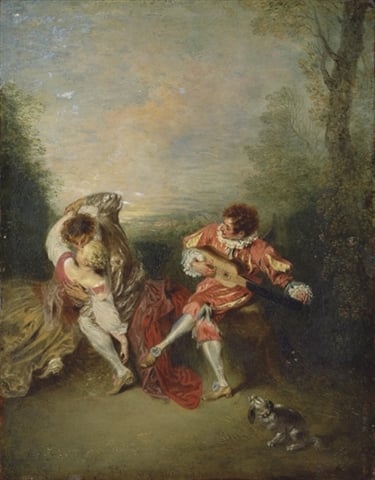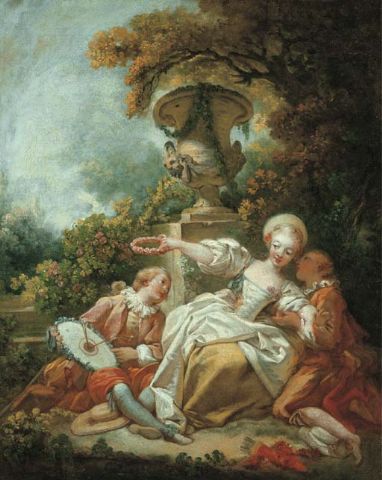Auctions
A Brief History of Rococo Art
Roccoco art: its history, as well as key figures in the movement.

Roccoco art: its history, as well as key figures in the movement.

Erica Trapasso

Rococo painting, which originated in early 18th century Paris, is characterized by soft colors and curvy lines, and depicts scenes of love, nature, amorous encounters, light-hearted entertainment, and youth. The word “rococo” derives from rocaille, which is French for rubble or rock. Rocaille refers to the shell-work in garden grottoes and is used as a descriptive word for the serpentine patterns seen in the Decorative Arts of the Rococo period.

Pair of Louis XV chairs, sold at Koller Auktionen Zürich on Thursday, March 21, 2013
After the death of Louis XIV, the French court moved from Versailles back to their old Parisian mansions, redecorating their homes using softer designs and more modest materials than that of the King’s grand baroque style. Instead of surrounding themselves with precious metals and rich colors, the French aristocracy now lived in intimate interiors made with stucco adornments, boiserie, and mirrored glass. This new style is characterized by its asymmetry, graceful curves, elegance, and the delightful new paintings of daily life and courtly love, which decorated the walls within these spaces.

Jean Antoine Watteau, La Surprise – A couple embracing while a figure dressed as Mezzetin tunes a guitar, sold at Christie’s London on Tuesday, July 8, 2008
The father of Rococo painting was Jean Antoine Watteau (French, 1684–1721), who invented a new genre called fêtes galantes, which were scenes of courtship parties. Born close to the Flemish border, Watteau was influenced by genre scenes of everyday life that were quite popular in Flanders and the Netherlands. He is best known for his depictions of elegantly dressed figures gathered in outdoor spaces, exchanging pleasantries and enjoying music.
Though educated thought was cultivated throughout the 18th century, a new kind of intellectual exchange began to develop, which became known as the Enlightenment. Out of this new cultural movement, ideas about art changed, and Rococo ideals of frivolity and elegant eroticism became less and less relevant. Art critics like Diderot sought for a “nobler art,” and enlightened philosophers like Voltaire criticized its triviality. While some Rococo artists continued to paint in their own provocative style, others developed a new kind of art, known as Neoclassicism, which appealed to the art critics of the time.

Jean Honoré Fragonard, La coquette fixée (The Fascinated Coquette), sold at Christie’s New York on Thursday, April 6, 2006
Jean Honoré Fragonard (French, 1732–1806) was one such painter who attempted to adapt his style to the artistic changes of the period; unlike Watteau, Fragonard’s skill wasn’t recognized until well after his death. Today, Fragonard is best known for his Rococo-style paintings like La coquette fixée (The Fascinated Coquette), which depicts an amorous encounter between a female and two males. The lustful male gazes establish the female figure as the focal point of the painting. As a work of light-hearted entertainment, there is no complex meaning or story behind the piece. It is a bright, cheerful scene meant for amusement and delight.